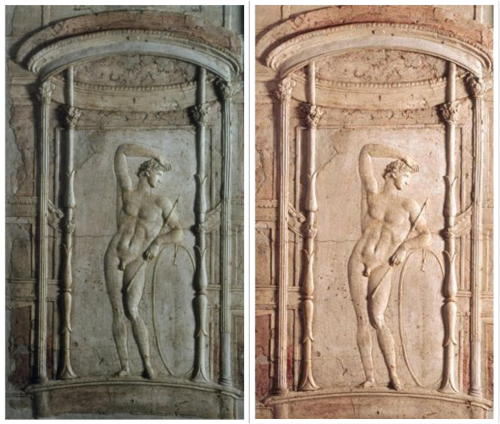#relief sculpture
The Palette of King Narmer
Hierakonpolis, Egypt, Predynastic, ca. 3000–2920 bce.
The Predynastic period ended with the unification of Upper and Lower Egypt, which until recently scholars thought occurred during the rule of the First Dynasty pharaoh Menes, identified by many Egyptologists with King Narmer. Narmer’s image and name appear on both sides of a ceremonial palette(stone slab with a circular depression) found at Hierakonpolis. The palette is one of the earliest historical (versus prehistorical) artworks preserved, but Egyptologists still debate exactly what event is depicted. No longer regarded as commemorating the foundation of the first of Egypt’s 31 dynasties around 2920 BCE (the last ended in 332 BCE), the reliefs probably record the unification of the two kingdoms. Scholars now believe this unification occurred over several centuries, but the palette depicts the creation of the “Kingdom of the Two Lands” as a single great event. (x)
Post link
Marble reliefs from the House of the Dionysiac Reliefs (Herculaneum), 1st c. AD, Naples, Museo Archeologico Nazionale.




The Triumph of Silenus, Gerard van Opstal, ca. 1660



